I must admit that I was a bit of a latecomer to UES. Even though they are based in Osaka, I had never visited their shop until a few months back after finally checking out their website and purchasing one of their fantastic flannels. The flame was lit, and I had to know more.
For a brand that many see as a smaller, underground outfit, I was initially surprised at the range of products that UES produces. From jeans to wallets, underwear to outerwear, UES makes a lot of stuff. Intrigued by their website (and also by posts on Instagram showing people wearing their gorgeous flannels) I finally decided to head downtown and check out their shop.
The owner was not there when I first visited, but the quality products and warm ambiance of the shop itself was more than worth the trip into the city. I also ended up buying a flannel while I was there (despite prior promises to myself that no purchases would be made) and managed to set up an appointment to meet with the boss at a later date. Several email exchanges later a date was set, and I found myself again headed back into the city to get to know the owner of this unique brand.
After an initial feeling out period, I found Matsumoto-san to be open and friendly, and we ended up having a great conversation about his company and the concept behind it. I hope you will enjoy the highlights here.
Can you tell me a bit about how this company came to be?
In 1967 my dad established the company. So it’s been over 50 years…54 I guess now?
What was he making?
Baby clothes. Stuff for kids.
Wow, that’s cool.
Yeah, some history there for sure. It wasn’t until about 2003 that we went fully into men’s clothing and made that our new target. Up until then it was kids’ stuff, as I mentioned, and maybe what you might call ‘family wear’.
Was it always called UES?
No, not back then. I think it was about 1994 that we started using the name UES.
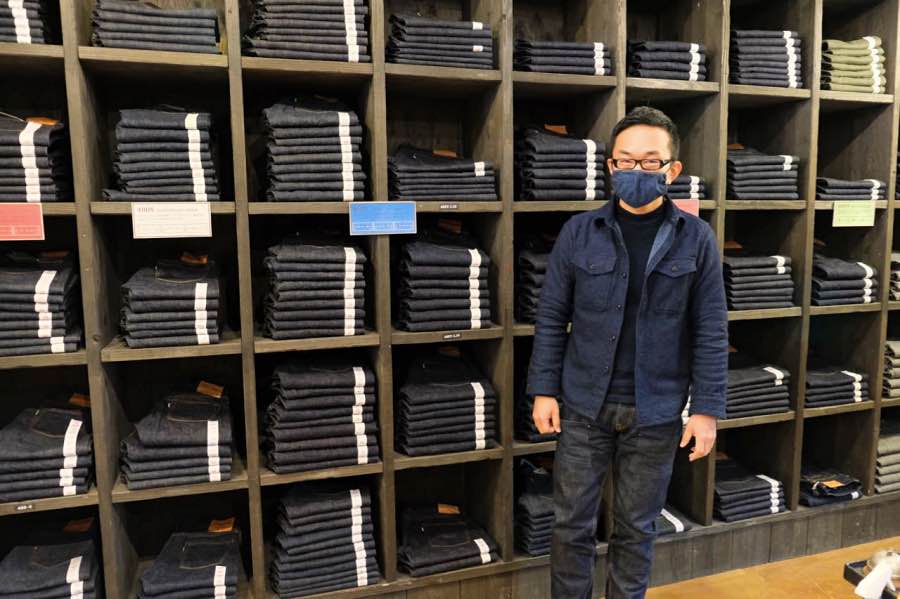
How did that name come about?
I’m not sure if you guys also use that term to mean like a dust cloth in the States or Canada? It’s the name of those cloths used in factories to wipe of oil and grime. At least in Japan that’s what they call them. It also of course sounds close to the word ‘waste’, so the whole concept behind it is, like, using something right until the very end. So literally to ‘not waste’, to wear your clothes until they really can’t be worn anymore, and then even after that they might have a life as a cloth or something like that.
Cool. I think though that most people overseas, when they see ‘UES’ they say it like ‘U-E-S’, like it’s an acronym for something..
Yeah, for sure, that is totally the way most people say it overseas. I think the way we pronounce it in Japan is hard for them (a bit like ‘ooh-ess’)
Are you from Osaka originally?
Yes, I am.
Were you guys always here at this location?
Mmm, not really. We used to be, and still are, in east Osaka. We still have our shipping office and stuff there. This is just the main sales and office location. It’s so small though, so that’s why our shipping and planning are done at the other location. But that used to be the main location.
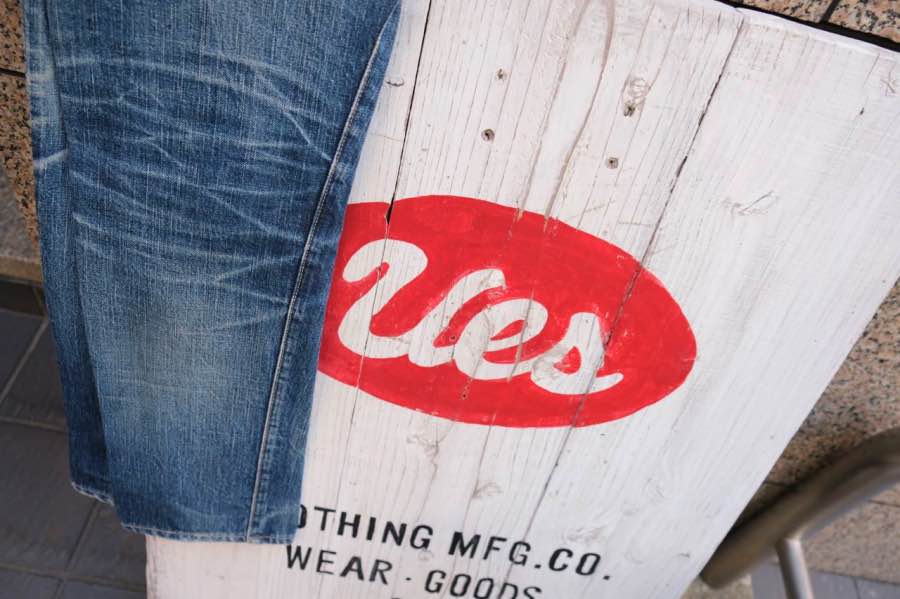
So were you always watching your dad working when you were a kid?
Yes, I grew up watching him working. Actually, check this out (shows me a bumpy scar on his thumb). You know the saw blades used for cutting denim? They’re super sharp…I cut myself pretty bad when I was a kid…so yeah, lots of memories of the work my dad was doing. I grew up surrounded by clothes making.
Were there any setbacks or difficulties you experienced once you took over the company?
Yes. Making the big change from kids’ clothes to mens’ stuff was difficult for sure. You know, you have to find a whole new market, new customers. It was tough.
Were you satisfied with what you were making back then or did take a while?
Stuff like production errors or things not turning out like you had envisioned happened for sure. Even now that happens, so you have to start over and remake whatever it is.
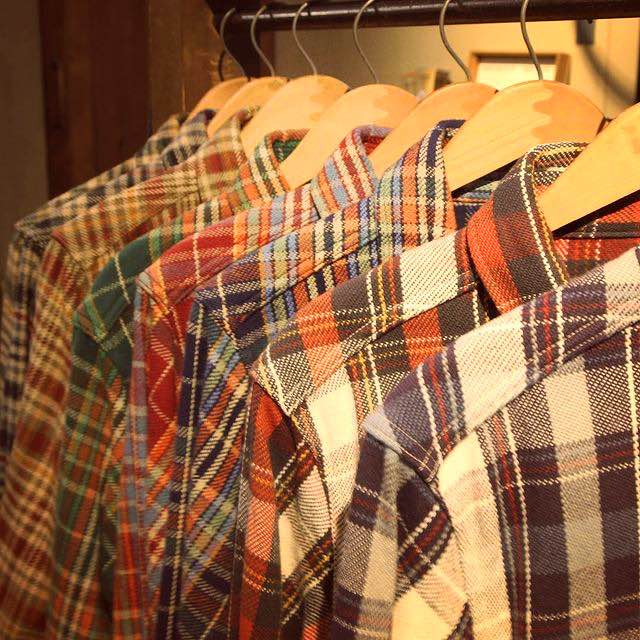
Do all the ideas for new items come directly for you?
Hmm…yes, but it’s also a mix of input from staff and customers too. So there are times that I’ll just make something I want to make, and times when it’s something that we’ve come up with after hearing the wishes of the customers. And we want it to be stuff that people can use for a really long time, that’s what we aim for. And everything is made here in Japan by Japanese so it’s easy for us communication-wise. Like we can talk easily and directly to the mills, to the sewing factory and tell them exactly what we want so we are lucky in that sense. If that was all based overseas, it would be way harder. I think even more things wouldn’t turn out the way we wanted them to be. Even in Japan we’re kind of excited and nervous to see how the end product actually turns out.
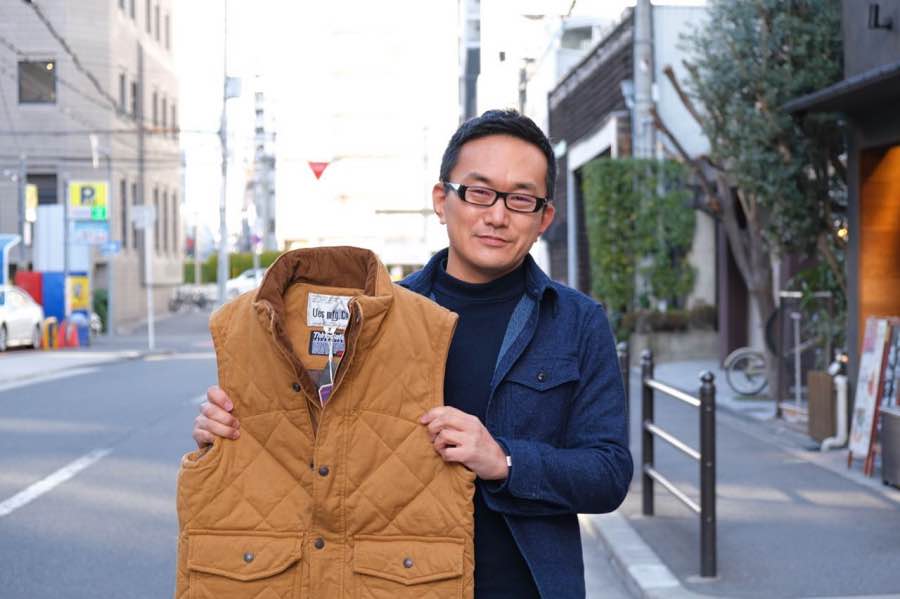
You said earlier you lived overseas – was that for work?
I lived in Vancouver for a year, but that was back in university. I went to UBC.
Ah wow, me too.
So it wasn’t for work, but I really started to see that kind of laid-back lifestyle, the outdoors, and I think that informed some of my designs. I also went to Chicago for a bit back in high school. So I got to be exposed to that kind of ‘amekaji’ fashion as well.
How has the Covid pandemic affected you guys?
It’s been big for sure. I mean the number of customers has dwindled right down…luckily online sales are still going well. You know, we can’t really gather for events, either here or overseas so…yeah, it’s tough. We have done some events online though. A while ago, before corona, we held a big ‘customer fade’ gallery in Tokyo. It was cool, but yeah, it’s not really something we can do again at the moment. But you know, it’s tough everywhere, not just here in Japan.
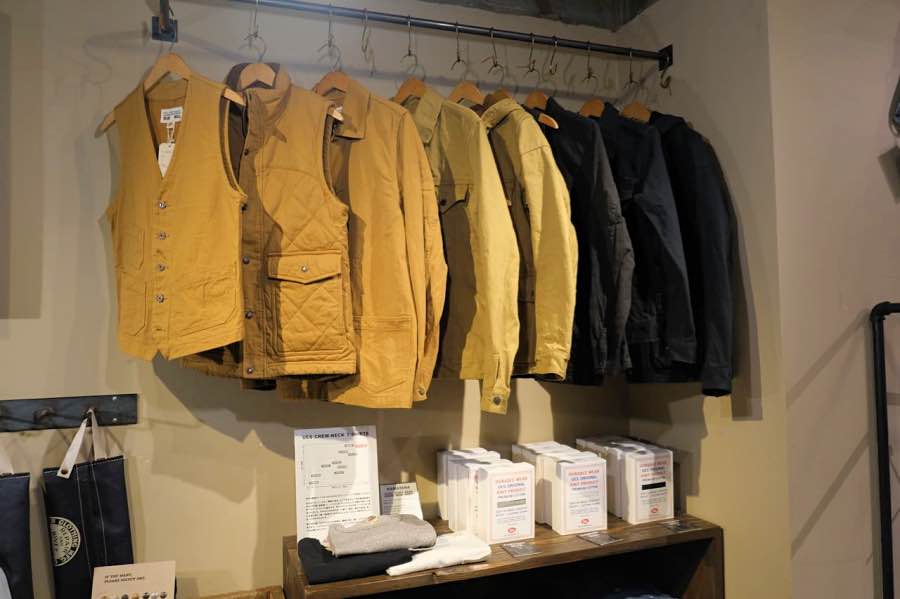
What do you see the difference between UES and maybe some of other Japanese brands?
Difference? Mmmm…that’s a tough one. I mean we all make different stuff…but I would probably say that our stuff is ‘yawarakai’ (this is a Japanese word that is a bit hard to translate but it can mean ‘soft’, ‘kind’, or ‘comfortable’). I think that our start in kids’ and family wear kind of lent a feeling of softness to our clothing that continues to this day. We don’t have like a heavy, hard, or rugged kind of image. Our flannels are heavy but you’ll notice that even the colors we use are pretty different from what other brands are doing. Comfort is important. I think sizing as well. Sizing and color. It’s a tough question because I’m not really watching what other brands are doing, but each brand has their own way of thinking, their own group of people who like what they are doing. Maybe another thing that we do really well is our accessories, our small items.
So it sounds like you don’t really have much contact at all with any of the other local brands.
Yeah, not really. Maybe it’s because we’ve kind of been based way out in east Osaka.
No other Japanese brands that you like?
Hmmm…(thinks for a while). Like I said, everyone is different and doing their own thing so… I know it’s not Japanese, but a brand whose philosophy I really like is Patagonia. I like what they’re doing.
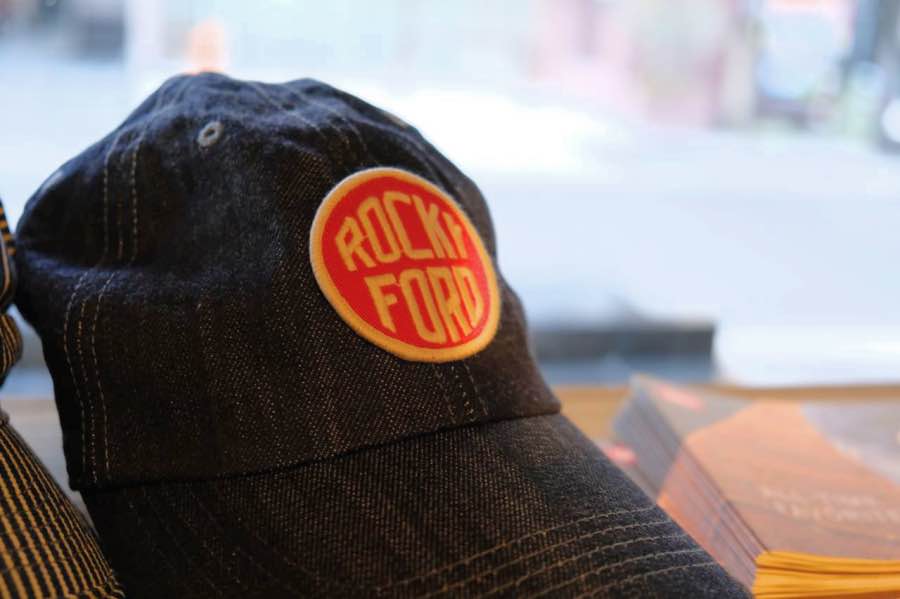
Can I ask about your ‘branding’ service? I mean the hot iron branding that you do on the leather patches…what’s that all about? I’ve never seen a brand do that before.
Yes, that’s something we came up with that we thought would be cool for people to record the date on their jeans. So you can see here (shows me branded patch example) the first two digits stand for the year, the next two for the month, and then the day. I think it adds to love you might have for your jeans you know, you can record either the date you bought them or the first time you wore them so like in 3 years you could be like, “Ah wow, it’s been 3 years already in these jeans.” It’s just an easy way to keep track of that.
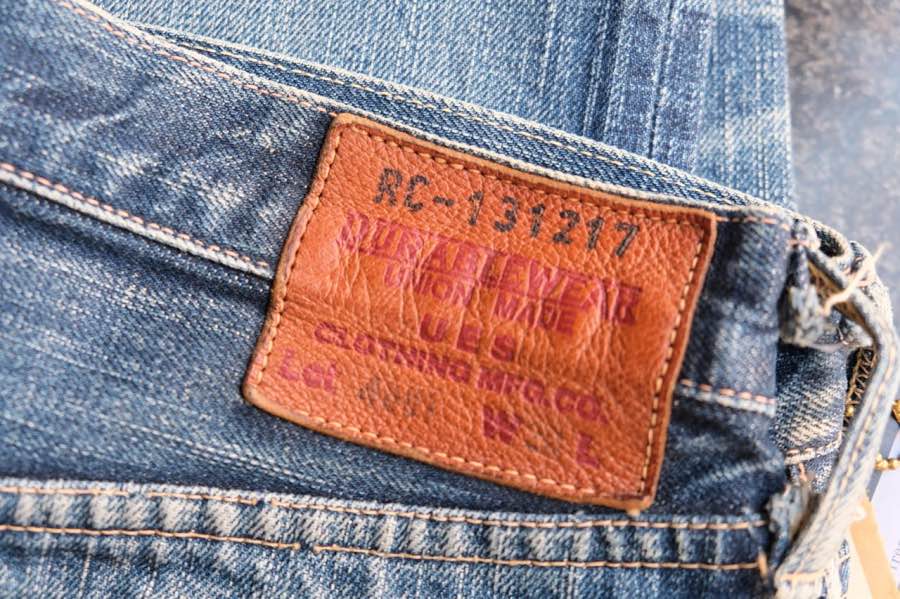
Alright the next one is tough – do you have a favorite material, model, item that you yourself have made?
(thinks for a while). Our jeans for sure…and our denim jacket…and the flannels. Haha, actually there’s a lot that I like.
Where does your denim come from?
Of course Okayama.
Can you say the name of the mill?
I’d actually prefer not to if that’s okay. Kind of a company secret.
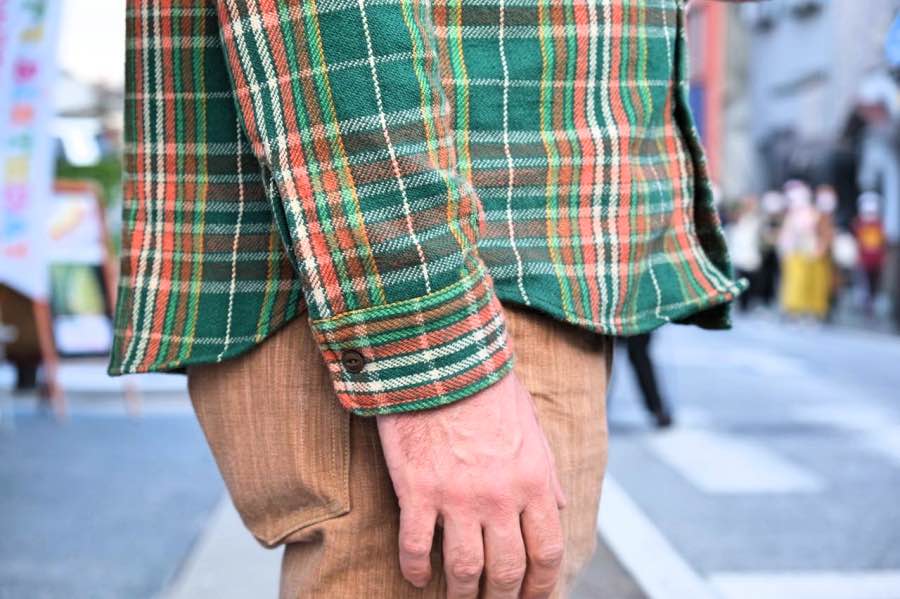
And the cotton?
Zimbabwe cotton that we have spun here into our original thread. We use some brown cotton in there too to give it a kind of deeper color.
Any issues on the Zimbabwe thing? I know some people feel weird about that…about buying from a place like Zimbabwe.
Really? Why?
Well, I think some people feel that the government is, or was, corrupt or that the working conditions there are not good…stuff like that.
Hmmm. Well we use their cotton because it really is amazing. Great for what we are making.
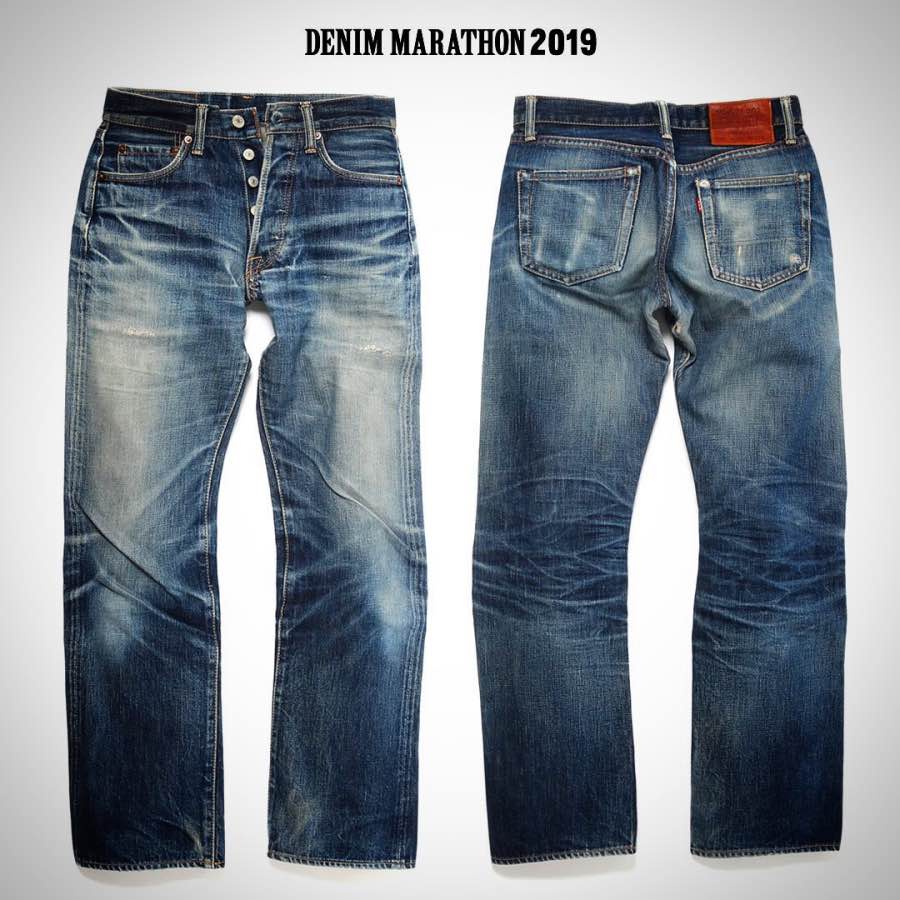
Have you guys tweaked your denim recipe over the years or do you basically keep it the same?
We’ve changed it up a few times, but the last time would have been over 10 years ago now I think.
And are all of your denim products made from the same denim or do you have a few different types?
Basically it’s all the same denim. There may be little parts where we use something else, but mainly it’s all made from our original 14.9oz denim.
How many jeans cuts do you have?
About 7 at the moment, but you know sometimes we might give one cut a break for a few years, introduce a new one, bring back an old one…so if you count all the cuts we’ve ever done it would be quite a few. But about 7 main ones right now.
How about your sewing? Where is that done?
It’s all done in Okayama and Hiroshima.
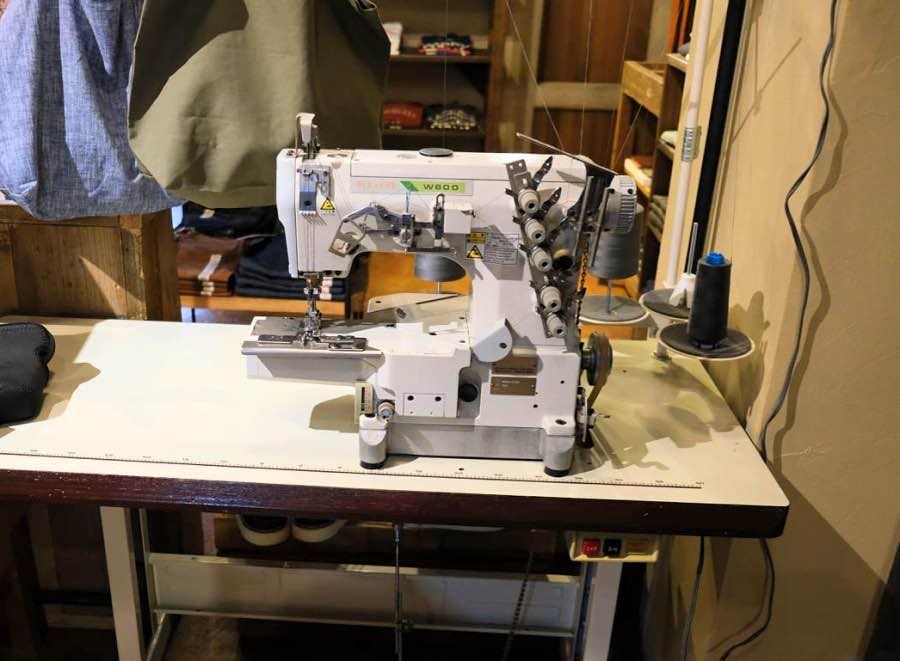
Those seem to be the places eh…Okayama, Fukuyama (Hiroshima).
Yes, that whole area is just synonymous with workwear. There’s another place way up in Akita, northern Japan too which is quite famous for sewing. I think Edwin does their stuff up there. But otherwise, it’s down in Okayama and Hiroshima.
Are you concerned at all about the aging workforce in the sewing factories? Or the weaving mills? Most of the workers are over 65…
Yeah, for sure. It’s a problem in my opinion. In the mills the older people are retiring…the dyeing industry is the same. These are all connected to each other. And on top of that you have the issue of the looms themselves and the parts. Even if you have some working looms, if you don’t have the parts to repair and maintain them then it’s not going to last. Of course the mills are doing what they can with using other machines for parts, or even making their own parts, but still… Especially the shuttles themselves. They just don’t make that stuff anymore. So there are several issues compounding each other.
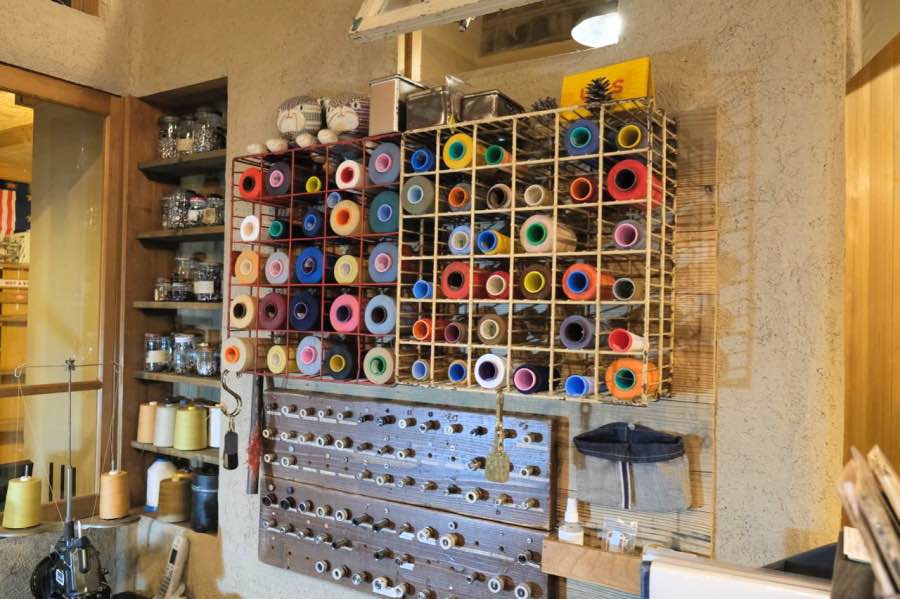
Do you ever use natural indigo?
No, we don’t. Just regular indigo.
Do you have customers from other countries coming in here?
Well normally, yes, but these days it’s almost zero. I mean nobody can get into Japan now, so it’s literally just foreigners that live here in Japan…like people who work at USJ (Universal Studios Japan).
Do you see any differences between Japanese customers and overseas customers?
The most obvious one would be body type.
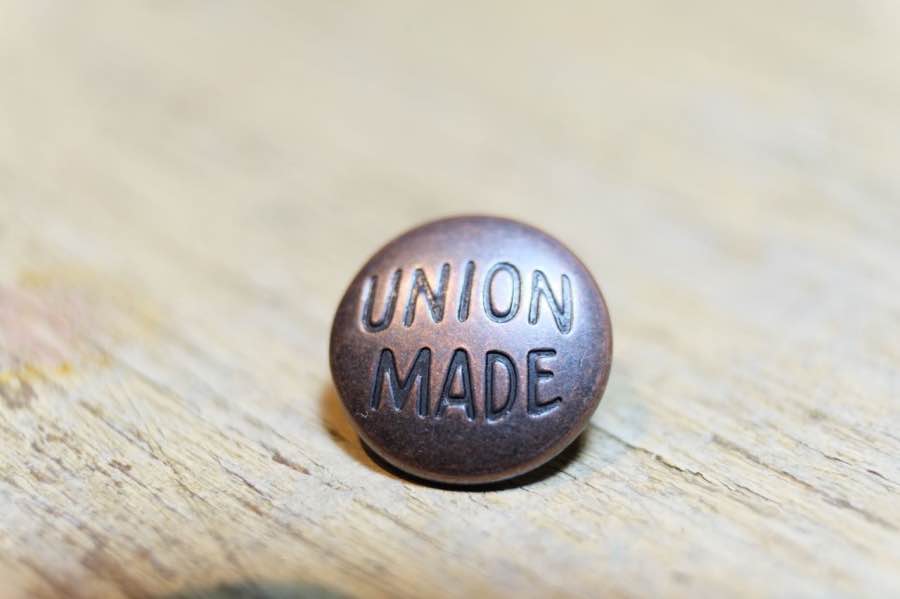
I was going to ask you about that actually. Are UES items based more on an average Japanese body type or are they geared more towards a ‘western’ body type?
Our sizes 1 and 2 are aimed at domestic customers, while our sizes 3, 4, and 5 fit our overseas customers better. I’m also always surprised at how much some of the overseas customers know about denim and how into it they are. It’s cool.
What’s the best part of your job?
When a customer is truly happy. And also when a product turns out exactly how I had envisioned it.
And the worst or hardest part?
Hmmm…quite a few things. Corona, obviously, but what can you do? Aside from that, the toughest thing is when the products don’t come out right, like there’s a flaw in the workmanship. The are now factory seconds right? They’re not something we can sell. It’s tough ending up with a pile of those. We don’t really do discount sales so…we can be stuck with a lot of stuff. Obviously throwing them out is no good so we actually donate a lot of stuff to a non-profit organization here in Japan that then sends the clothes to developing countries.
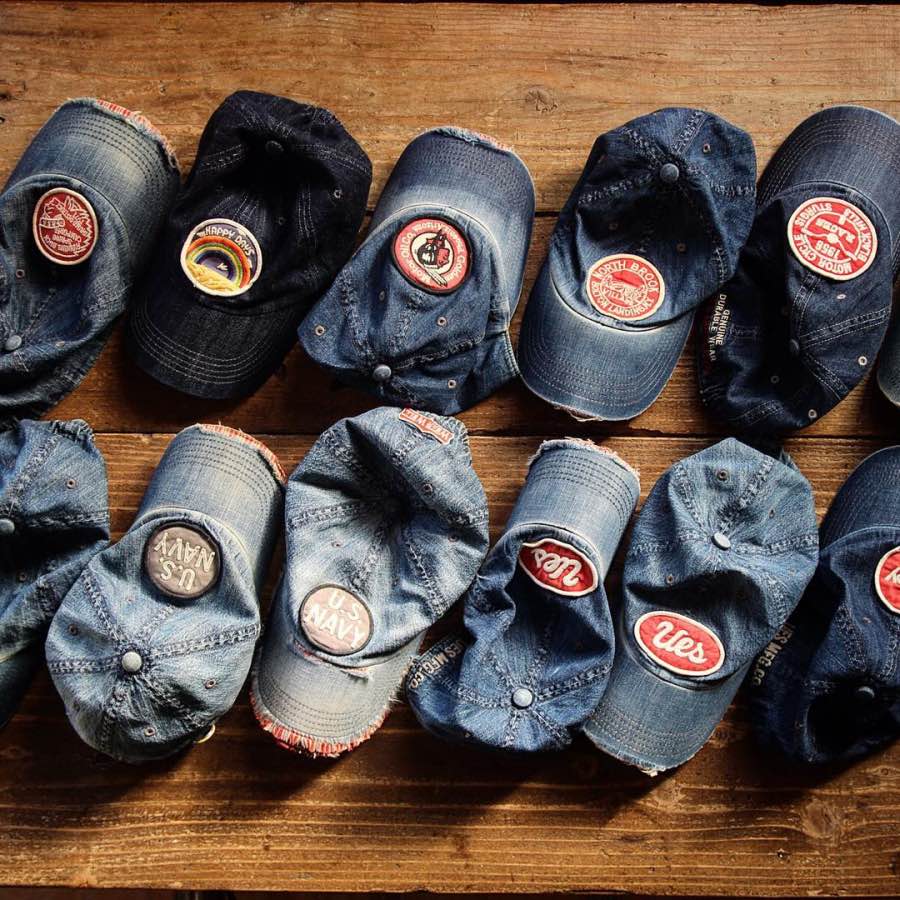
That’s good. You don’t ever just have a sale and sell that stuff here?
Mmmm…to me a sale is when you’re selling a perfect product, a factory first, for a lower price, not trying to sell something that’s damaged or flawed in some way. I guess if the customer understands that the damage is the reason for the lower price it might work but…we haven’t really been doing that.
How would you describe yourself? Your personality?
My personality? Hmmm…it’s hard to know your own personality…
Do you have hobbies? Stuff you like to do when you’re not working?
I love cameras, photography. Riding bikes. Been rollerblading too recently.
What kind of bike to you have?
1985 Yamaha SRX-6. It’s old but it still rides so beautifully.
Do you wear jeans everyday?
Every day.
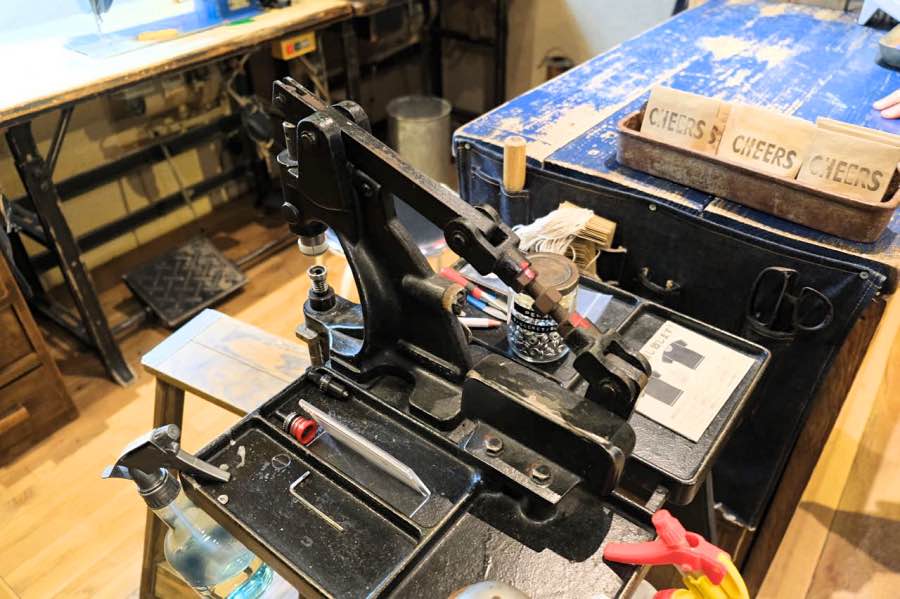
Wow, even in summer?
Even in summer. It’s hot in Japan, but that’s great for fades, right?
You’re stronger than me…
I kind of have this little system that I follow actually, a pair a year. I’ve faded 17 pairs like that so far. To make it easier, I start in October because things start to cool off here around that time so I don’t need to really wash them through the fall and winter. Then I go until about June and then wash them and the fades really come out. It seems to work well.
Is there anything you’d like to make that you haven’t yet?
I actually built my own UES bicycle a while back.
How do you guys handle repairs? What do you think about some companies offering warranties or lifetime free repairs?
Well we of course do repairs here too, but it’s kind of on a case-by-case basis. If something is well and truly destroyed (like a huge rip), of course we can’t really repair something like that for free. Our stance is kind of based on being reasonable, on goodwill. I mean like if your stitches are coming loose or a button falls off, although we don’t officially have a warranty, we’ll have a look and more than likely fix it up for free. It’s kind of like when you were a kid, right? If your button came off or the thread was coming out, mom would fix it right? We want to move in the same spirit as that. So for that level of repairs we’ve got you covered.
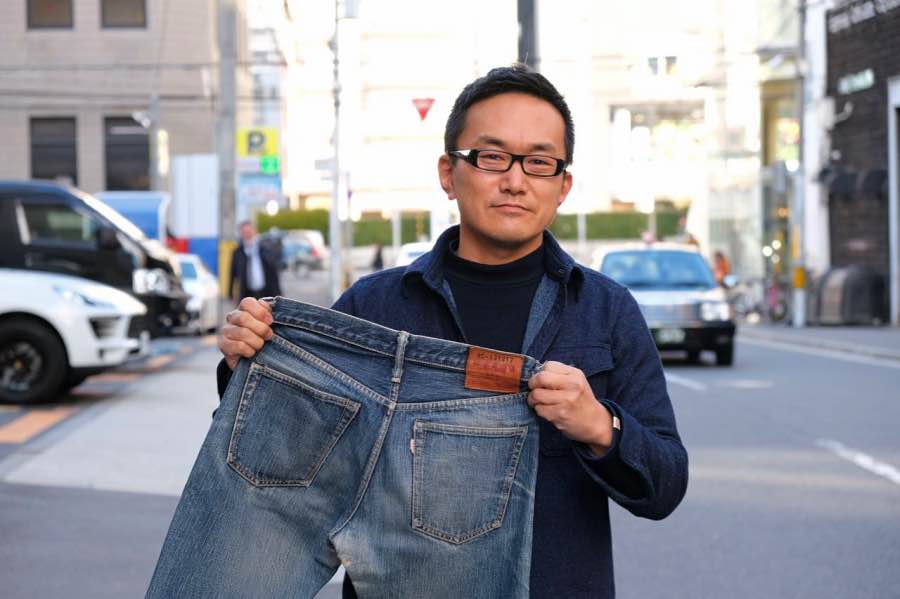
Do you have any interest in heavy or slubby denim?
Heavy denim…no, not really. Or denim that is super slubby. You know, if you want to make really slubby denim like that it’s extremely hard on the looms. You have to push them in way that they weren’t meant to be run. My way of thinking is that we want the loom to be working at its optimal as far as tension or yarn thickness goes. That’s when you’re going to get the best fabric and it’s also what the machines were meant to do. I kind of would rather make something that might not look so striking at first, as the case may be with heavy or slubby denim, but something where the character really starts to come out after months of wear. Of course I understand that something like heavy denim does have an impact, like you just hold it in your hand and you can feel the weight…but the question of whether it’s actually comfortable to wear or not is another conversation. I also think that heavy slubby denim already has its own world where people are happily making it and their customers are happily buying it, and that’s great. It’s just not something I’m interested in getting in to.
Stretch denim?
For us, we don’t make it. Our concept is about being able to use things for a long time, and stretch denim needs to have polyurethane in it. This stretches out and loses its elasticity over time.
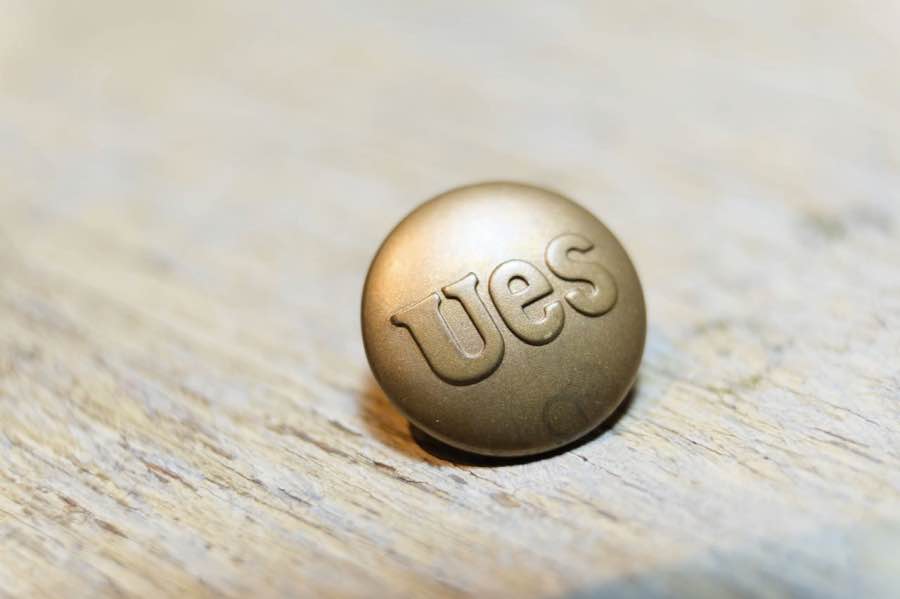
What’s good about Osaka?
Osaka? The food is awesome. Hmm…there must be something else…I’m from Osaka so I’m always here so…it’s tough for me to have a base for comparison.
Compared to Tokyo…
I kind of feel that Tokyo is too crowded.
Any final message for your UES fans?
I’m super appreciative for everyone who is wearing or has tried UES. I promise that we will keep providing honest, quality products for as long as we can. I want to repay everyone’s interest and support with the best things possible. I hope you will continue to support us in the future. Thanks so much.
Thanks for your time today Matsumoto-san, it’s been great.
No problem, thanks for coming down. Shall we go have a look at some of the stuff in the shop?
Absolutely.
UES hompage here.

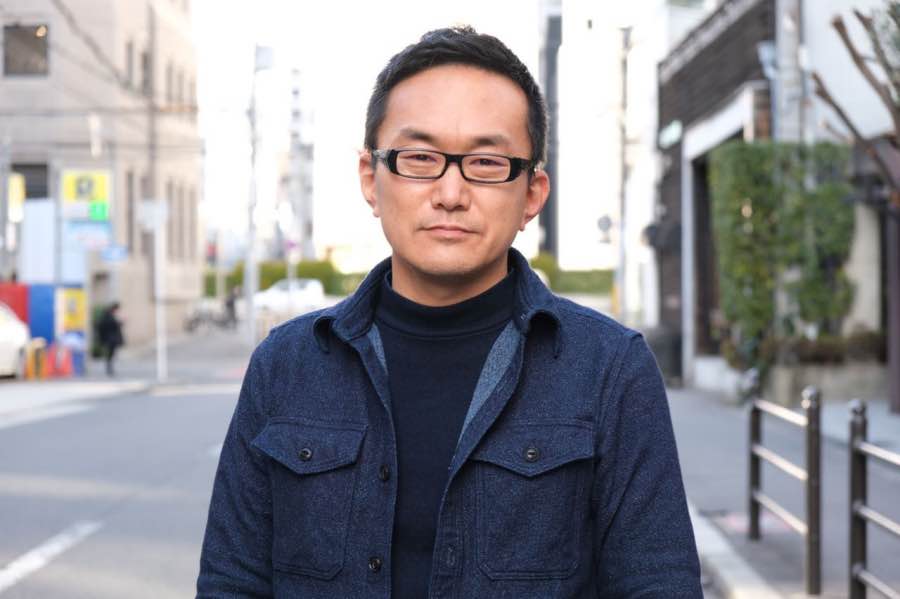
Pingback: The Levi's Back Patch - The Weekly Rundown